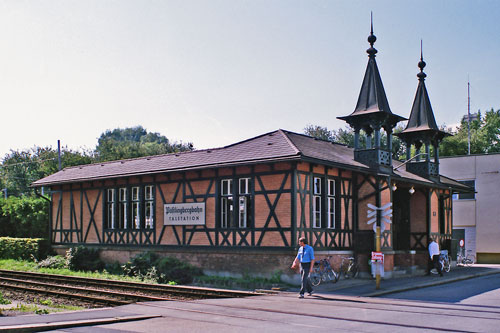|
|
|
| |
Including the Pöstlingbergbahn
All images link to larger
copies which will open in a new window/tab
|
|
|
This page shows images of Linz trams and the
Pöstlingbergbahn from visits in 1974 and 1989, plus old postcards.
|
|
|
|
|
|
Including the Pöstlingbergbahn
All images link to larger
copies which will open in a new window/tab
Older Linz Trams
Older two axle Linz trams and
trailers in Adolf Hitler Platz
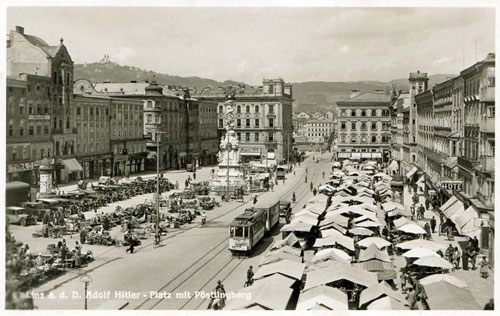 Older two axle Linz trams and
trailers crossing the Danube
Older two axle Linz trams and
trailers crossing the Danube
Pöstlingberg in the background
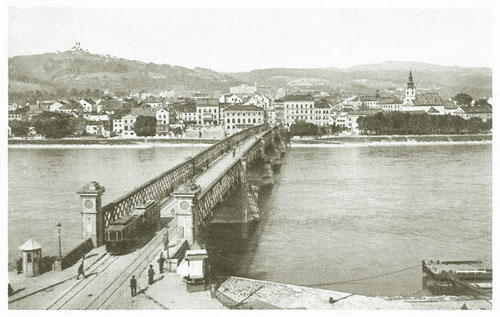
Linz trams 1-15 were replacement post-war two-axle 22-seat vehicles built
1949-1951. Remaining older trams already with these numbers were renumbered 46-51 in
1949. Matching two-axle trailers 101-126 were also completed between
1949-1951. Trams frequently pulled two trailers hence the larger number of
trailers than motor trams. All had been withdrawn by my 1989 visit, but some
have been preserved.
Two axle Linz trams and trailers
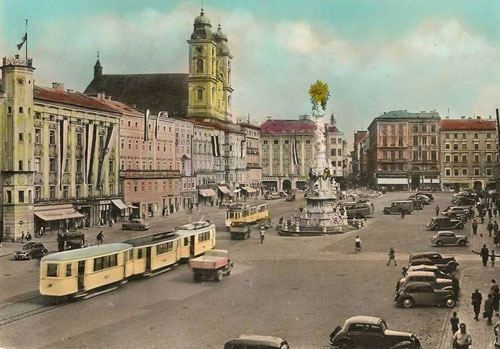
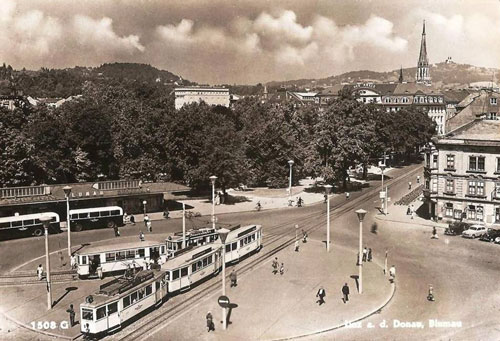
Tram 11
Two axle Linz tram No.11 at
St
Florian
Photo: ©1989 Ian Boyle
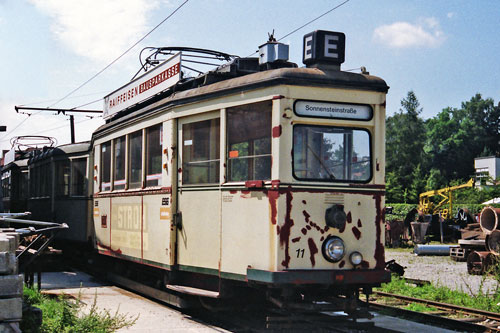
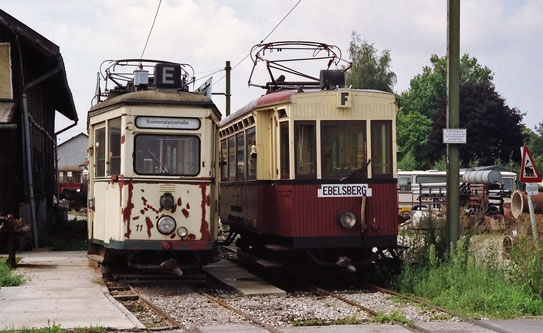

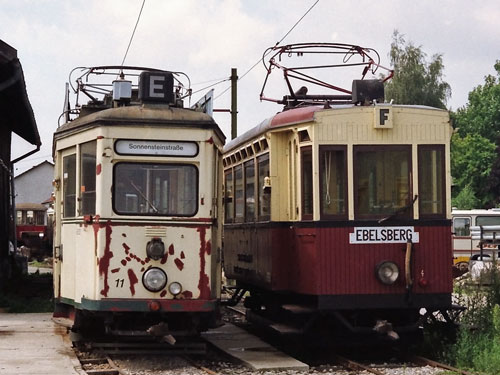
Linz built another series of 'standard' two-axle trams in . It later moved
to the
Museumbahn St Florian,
which has since suspended operations.
Linz built another series of 'standard' two-axle trams in . It later moved
to the
Museumbahn St Florian,
which has since suspended operations.
Linz tram Nos.114 & 115 amongst lines of other
withdrawn trams and trailers
Photo: ©1989 Ian Boyle
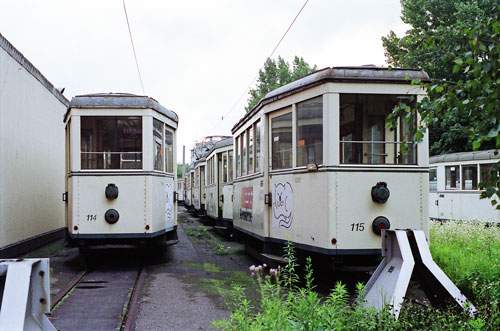
Linz trams 61-67 were built by Lohner, Wien, in 1970-71. These were 6-axle,
2 section articulated trams, later rebuilt as 8-axle, 3-section, trams in
1973-74. 81-88 were also built in 1971-71 as 8-axle, 3-section trams from
the start.
Later deliveries 68-79 in 1977 were as 8-axle, 3-section trams, but
rebuilt as 10-axle, 4-section, articulated trams just two years later.
Tram 63
Eight-axle Linz tram No.63 at Linz
Hauptbahnhof
Photo: ©1989 Ian Boyle
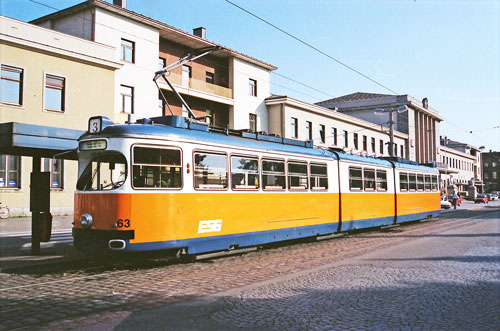
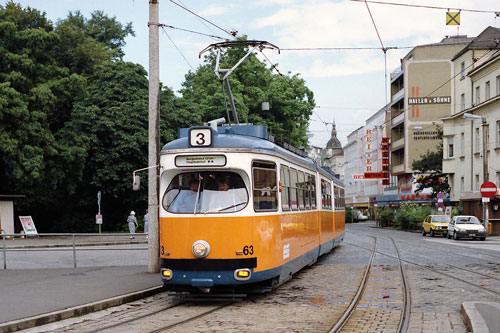
Tram 70
Ten-axle Linz tram No.70
Photo: ©1989 Ian Boyle
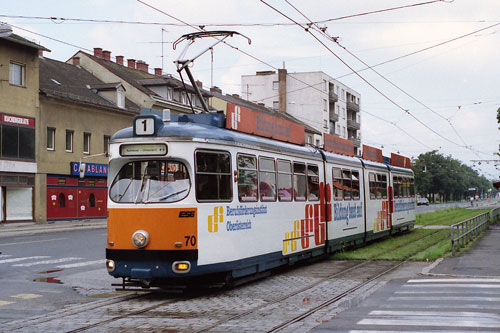
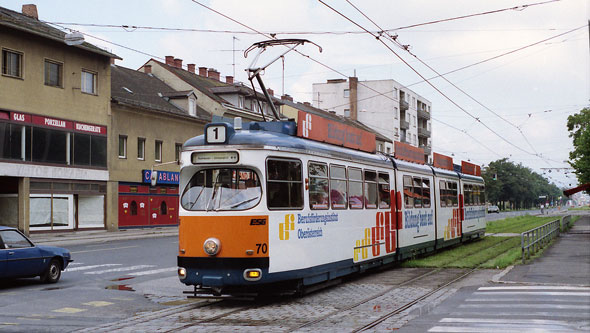
Linz trams 41-56 were built by Bombardier-Rotax-Wien, Wien, in 1984-86.
These are 10-axle, 4-section, articulated trams.
Tram 41
Ten-axle Linz trams Nos.41 and
52
Photo: ©1989 Ian Boyle
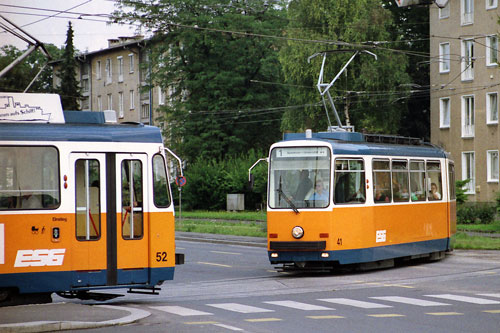
Tram 44
Ten-axle Linz tram No.44 at the
Hauptplatz
Photo: ©1989 Ian Boyle
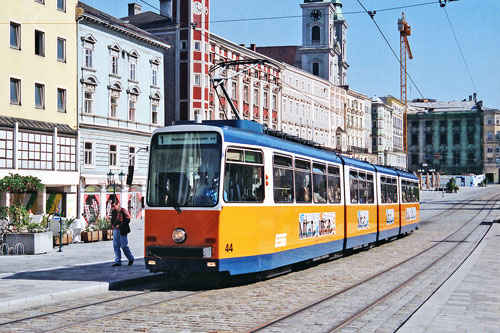
Tram 46
Ten-axle Linz tram No.46
Photo: ©1989 Ian Boyle
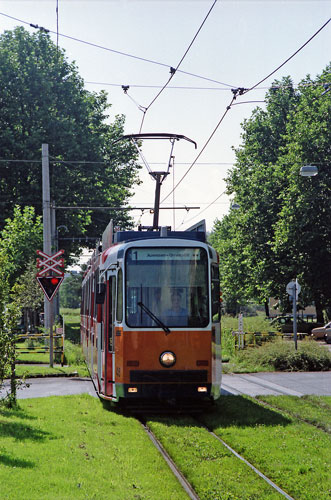
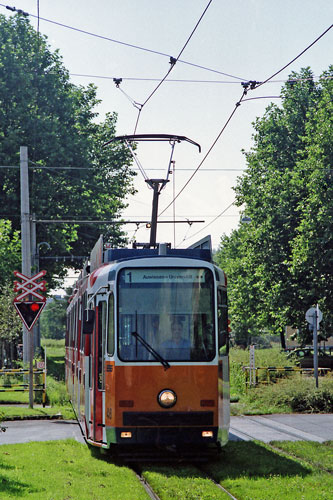
Tram 52
Ten-axle Linz tram 52
Photo: ©1989 Ian Boyle
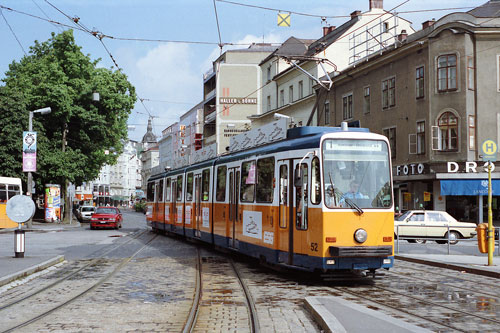

Work began in 1897 on the 2.9 km long, metre gauge Pöstlingbergbahn which
was completed in just one year with operations starting on May 29th 1898.
The original crossing over the Mühlkreisbahn which had opened in 1888,
proved to a major obstacle in operations and so the Linz terminus was
relocated to its current position north of the Mühlkreisbahn as early as the
end of 1898.
The mountain terminus of the railway occupies one of seven fortification
towers constructed around 1830 on the Pöstlingberg. The Hotel on the
Pöstlingberg was also opened in 1898. Finally, the Grottobahn was completed
in 1906, also in one of the fortification towers, a tourist attraction that
has remained popular to the present day.
The technical equipment of the Pöstlingbergbahn remained largely unchanged
since it was opened until its rebuilding in the 21st Century. Over a
distance of 2.9 km, it climbs 255 metres in 16 minutes. The incline is 10.5
% throughout the trip with the exception of the flat termini and the 3% of
the passing points. The Pöstlingbergbahn is still one of the steepest
adhesion railways in the world.
The tracks have a wedge-head profile and are mounted on steel sleepers with
a 1000 mm gauge. The railway is single track, with three passing points
permitting operation of a 10 minute interval service with three cars in each
direction, if required. Normally, the railway operates every 20 minutes. The
fleet consist of 13 (originally 15) trams each with a 22 kW motor. They are
powered by 600V dc, achieving an upward speed of 12 km per hour while
downhill they are allowed to run at 13.5 km/hour.
In addition to the manual and electric motor brakes, a very effective clasp
brake on the running rails acts as third brake, ensuring safety. The use of
the clasp brakes prevents the installation of normal points. The railway was
therefore equipped with stub points of a special design, with the rotating
centre being of particular interest. The three (originally four) open summer
carriages are popular amongst both amateur photographers and passengers, and
went into service when the railway was opened.
Since it was opened, the railway has undergone a number of technical
improvements; for instance as a result of the heavy wear on the rails, force
rails were installed as early as after the First War World, and adjusted
wheel sets were used. In addition, the wooden masts for the overhead lines
were replaced by steel masts, the Hagen and Pöstlingberg stops were extended
and the trolley poles were replaced by contact shoes. The superstructures of
twelve of the enclosed trams were replaced between 1950 and 1960 with a more
modern design. The Linz terminus station was fundamentally renovated for the
first time in 1978. In 1988, a start was made on a further modernisation of
the station, completed in 1989. However, nothing was changed in the station's
external appearance. In addition, one-man operation was commenced on October
11th, 1988, which required the fitting of additional safety brakes to the
carriages and converting the points to electrical operation.
The passenger frequency of the railway is a reflection of the economic
situation. The First World War brought many visitors to Linz, and the
railway experienced its first frequency peak in 1918 with around 700,000
passengers. The following economic crisis caused passenger figures to fall
substantially. It was only in the Second War World that passenger figures
rose again, reaching the all-time high in 1943 with almost 1.3 million
trips. Between the end of the war and 1956, frequency changed very little,
amounting to around 1 million per annum. The following wave of motorisation
caused a drop in frequency for the Pöstlingbergbahn, like all other
excursion railways. Thanks to increasing settlement on the Pöstlingberg,
leading to a corresponding increase in journeys made on the railway outside
the summer traffic peaks, frequency has now levelled out at around 500,000
passengers per year.
Fortunately, the rumours that the railway was to cease operations for
technical reasons were silenced. A company was found that still manufactures
the unusual wedge-head rails needed for the renovation of the track. As a
result, the continued existence of the Pöstlingberg Railway was secured, and
Linz has succeeded in maintaining not only a popular means of transport but
also a testimony to Austrian railway inventiveness. As the steepest adhesion
railway in Europe, it has been in the Guinness Book of Records since 1983,
and the Pöstlingbergbahn is possibly the steepest adhesion railway in the
world.
In 1998, numerous festivities were held along the track and on the hill
itself to celebrate the hundredth anniversary of the Pöstlingberg Railway.
On June 12th, 1998, a commemorative stamp "100 years of the Mountain
Railway" was released, with a special postmark.
Starting on 25th March 2008 service was temporarily halted for
reconstruction and fleet replacement. During the 14-month suspension of rail
service, buses provided a substitute service. On the existing section of the
line, the most notable change was the re-gauging from meter gauge to 900 mm.
The track was completely rebuilt, the unusual "Y" head rails being replaced
with conventional flat-bottomed rails on concrete ties/sleepers.
Three new low-floor tramcars were purchased from Bombardier, numbered
501-503. The purchase price was €4.6 million each. In addition, three old
trams (VIII, X and XI) from the then-current fleet were chosen to be
retained and modernized through rebuilding of their chassis, and the fitting
of dual traction control systems. Braking is by magnetic brakes instead of
the calliper brakes previously used. Trolley pole current collection was
replaced by pantograph collection with the change; the overhead wires were
modified accordingly. The first of three new Bombardier vehicles arrived on
2 April 2009; the other two cars followed in early May. The delivery of the
three rebuilt old cars took place at a later date.
The total cost for the conversion amounted to €35 million, €20 million for
the vehicles and €15 million for the rebuilding of the line including the
extended operation to the main square.
The changes have caused the Pöstlingbergbahn to be more closely integrated
into the urban transit system. From the Hauptplatz in the city centre,
a passenger can now travel through to Pöstlingberg. These include tourists
travelling by rail from the boat docks.
The official opening of the rebuilt and extended Pöstlingbergbahn was held
on 29 May 2009, in time to celebrate the line's 111th anniversary.
Initial rolling stock on the Pöstlingbergbahn consisted of tram Nos.I-VI.
built by Graz Waggonfabrik in 1898. Theses were originally all open
crossbench cars, known as 'sommertriebwagen' (summer cars).
No.I ran on the railway until 2008 when It passed to the
Pöstlingbergbahn Museum.
No.II (1) was rebuilt as an enclosed car in 1901 and it was renumbered
VI in 1905. Scrapped 1960.
No.II (2) original No.VI became No.II (2) in 1905.
No.III ran on the railway until 2008 when it was leased to the
Nostalgiebahnen Kärnten.
No.IV ran on the railway until 1995 when it was leased to Gmunden.
No.V (1) had its body re-used as Linz trailer No.82 in 1920.
Renumbered 32 in in 1927.
No.VI was renumbered II (2) in 1905. It ran on the railway until 2008
when it was leased to Stern & Hafferl.
Pöstlingbergbahn open crossbench postcards


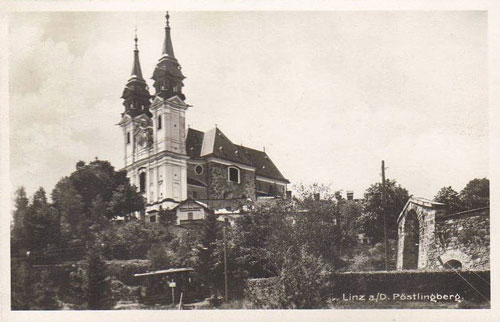
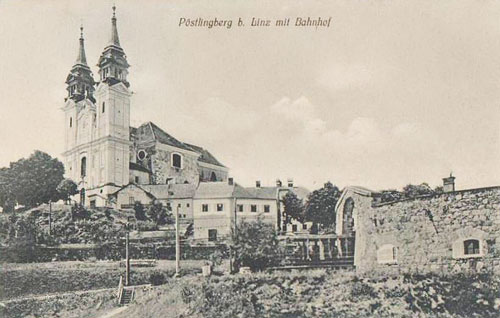

Crossbench Pöstlingbergbahn tram No.I was built by Graz in 1898 for the
opening of the railway. It ran on the railway until 2008 when It passed to
the Pöstlingbergbahn Museum.
Pöstlingbergbahn open crossbench postcards
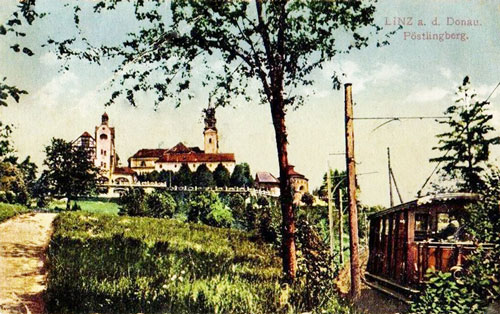
Crossbench Pöstlingbergbahn tram No.I
Photo: ©1989 Ian & Margaret Boyle
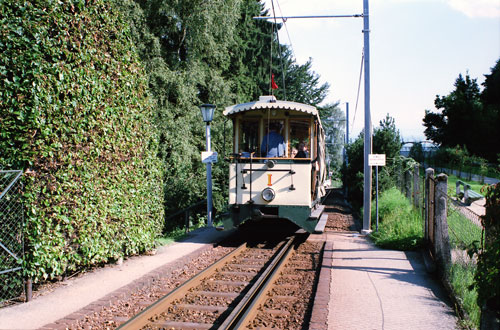
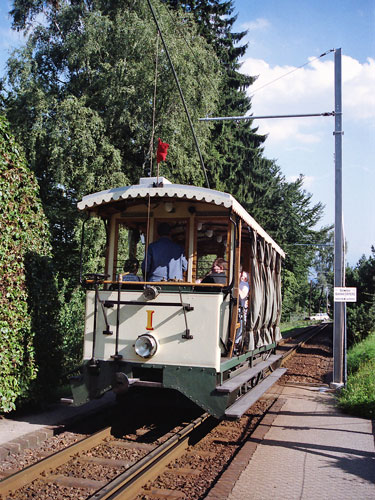
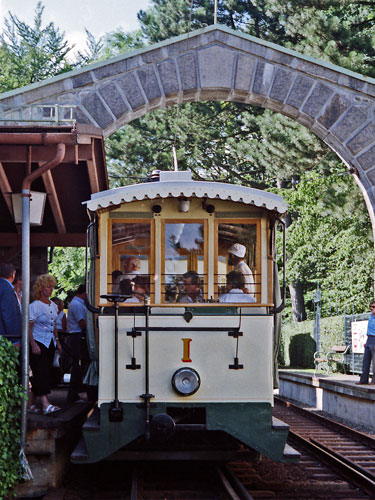
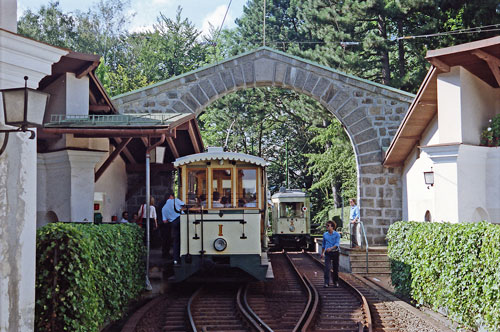
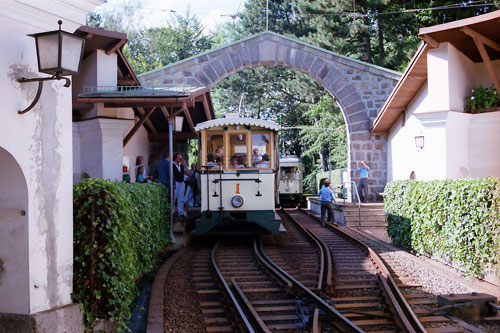
Crossbench Pöstlingbergbahn tram No.I was built by Graz in 1898 for the
opening of the railway. It was rebuilt with side doors in 1901 and
renumbered VI in 1905. In 1937 the doors were removed and it was renumbered
V. It was scrapped in 1960.
Pöstlingbergbahn open crossbench postcards

Crossbench Pöstlingbergbahn tram No.III was built by Graz in 1898 for the
opening of the railway. It ran on the railway until 2008 when it was leased
to the Nostalgiebahnen Kärnten.
Pöstlingbergbahn open crossbench postcards
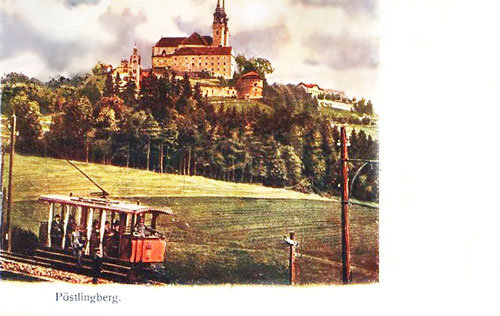
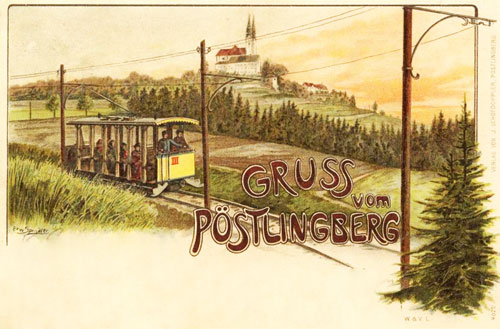
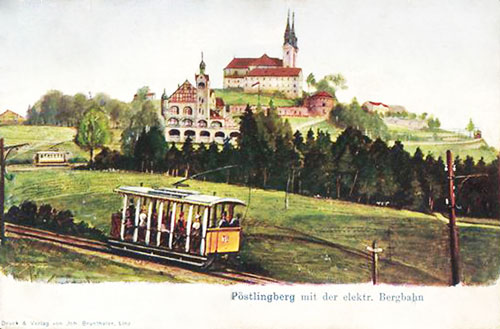
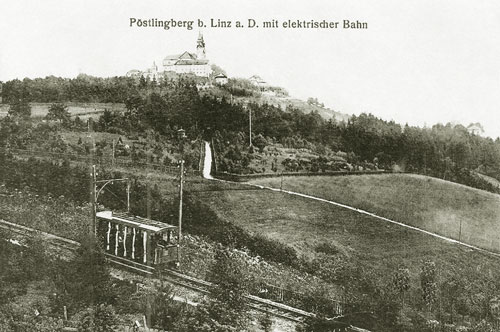
Enclosed cars VII and VIII followed from Graz Waggonfabrik in 1899. These
had seven small windows each side.
No.VII was rebuilt with a new body in 1951/52. It was scrapped in
1979.
No.VIII was rebodied in 1950 and was modernised in 2008/09 to run on
the 'new' 900mm gauge Pöstlingbergbahn.
Pöstlingbergbahn tram postcards showing No.VII or VIII
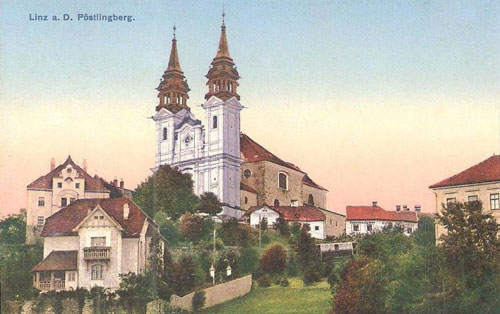
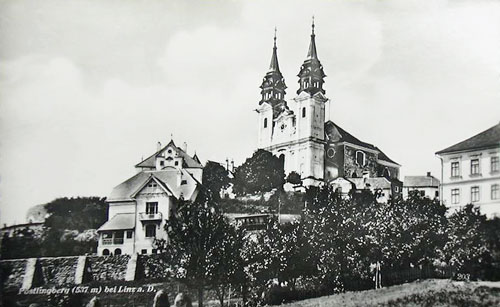
Enclosed car No.VIII was built by Graz Waggonfabrik in 1899. It was rebodied
in 1950 and was modernised in 2008/09 to run on the 'new' 900mm gauge
Pöstlingbergbahn.
Pöstlingbergbahn tram No.VIII
Photo: ©1989 Ian & Margaret Boyle

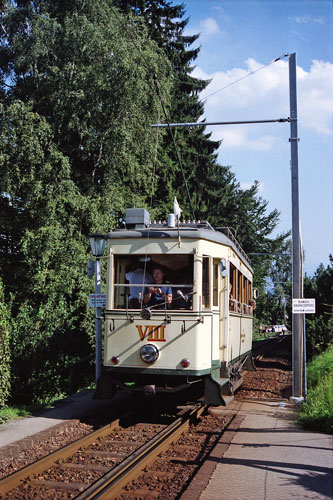
A new enclosed car No.IX was built in 1904 by TEG/Drobil. It had two large
and two small windows on each side and was unique in the fleet. The end
balconies were originally open, but enclosed in 1921. It received a new body
in 1952 and was scrapped in 1979.
No.X was similar, but with three large windows per side, and was built in
1912 by Grazer Waggonfabrik. It received an new body in 1959 and was
modernised in 2008/09 to run on the 'new' 900mm gauge Pöstlingbergbahn.
Pöstlingbergbahn No.IX postcard
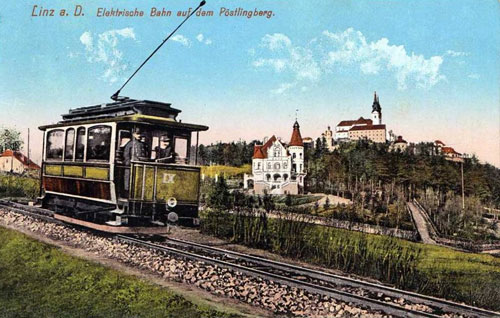
New enclosed cars XI-XVIII were built by ESG (Linzer Elektrzitäts, Ferwärme &
Verkehrsbetriebe) between 1948-58.
No.XI ran until withdrawn in 2004. It was modernised in 2008/09 to run on
the 'new' 900mm gauge Pöstlingbergbahn
No.XII ran until 2008 and passed to Pöstlingbergbahn Museum
No.XIII transferred 1979 to ÖGEG to run on Museumbahn-St Florian (since
suspended)
No.XIV ran until 2008 when it was leased to the Nostalgiebahnen Kärnten
No.XV ran until 2008 when it was leased to the Nostalgiebahnen Kärnten
No.XVI ran until 2008 when it was leased to Stern & Hafferl
No.XVII ran until 2004 when it was sold to Payreder Metallbau who
mounted it on a tyred chassis pulled by a tractor
No.XVIII ran until 2008 when it was leased to the Nostalgiebahnen Kärnten
Pöstlingbergbahn tram No.XI
Photo: ©1989 Ian Boyle
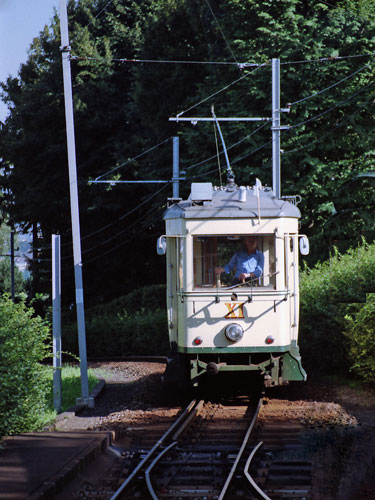
Pöstlingbergbahn tram No.XIII at the Pichling
'terminus' of the Museumbahn St Florian
Photo: ©1989 Ian Boyle
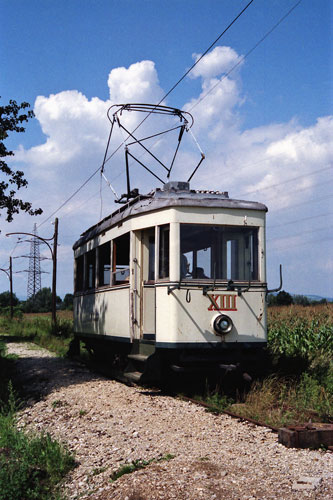
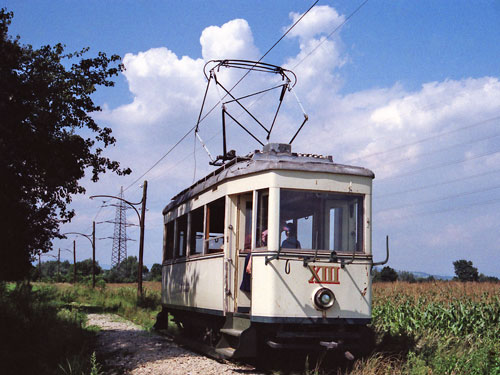
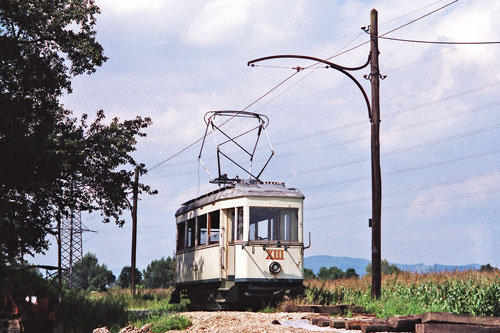
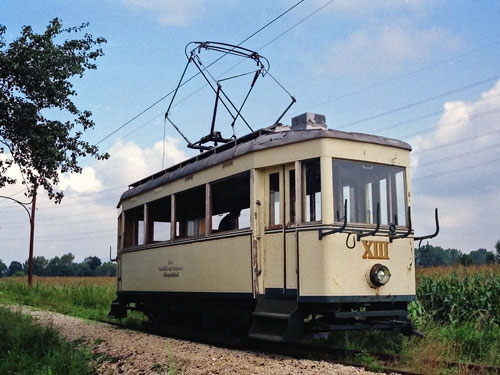
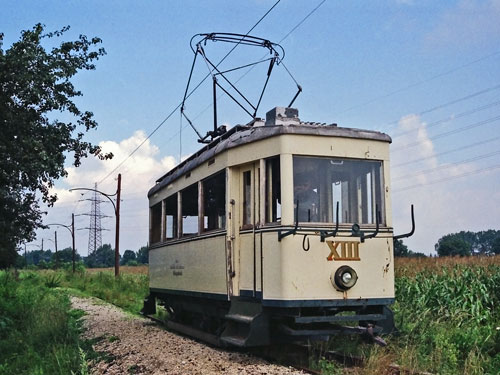
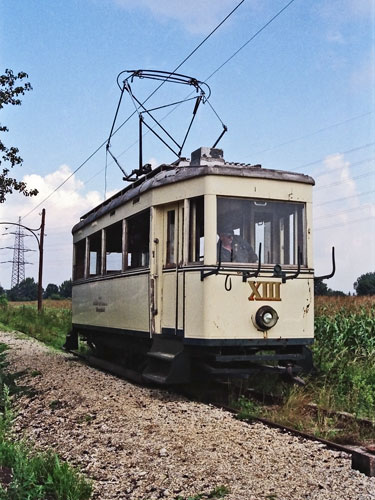
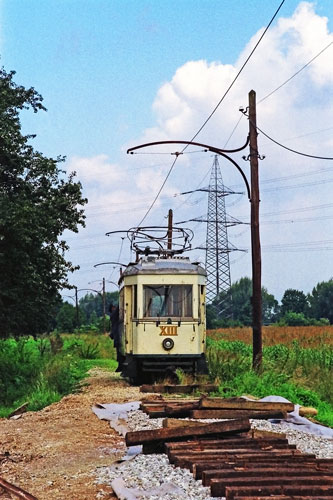
Pöstlingbergbahn tram No.XIV
Photo: ©1989 Ian Boyle
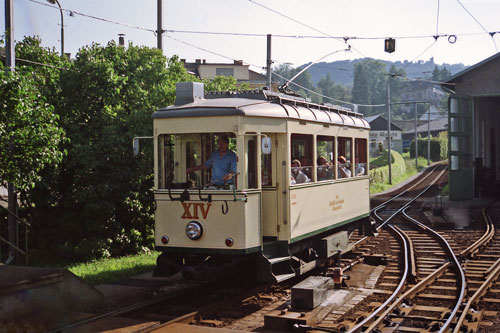
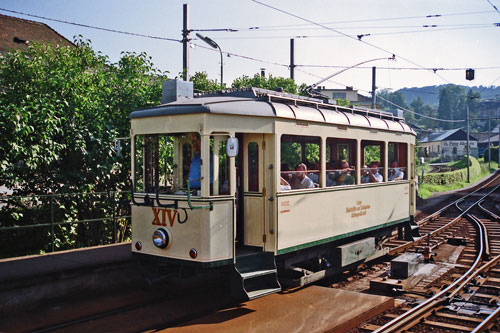
Pöstlingbergbahn tram No.XVI
Photo: ©1989 Ian Boyle
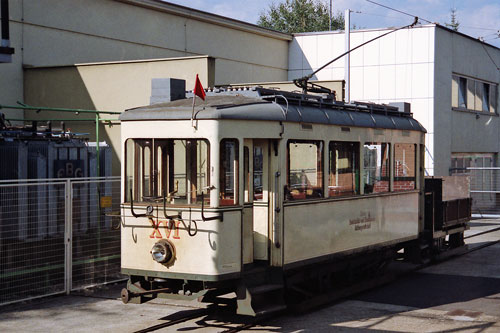
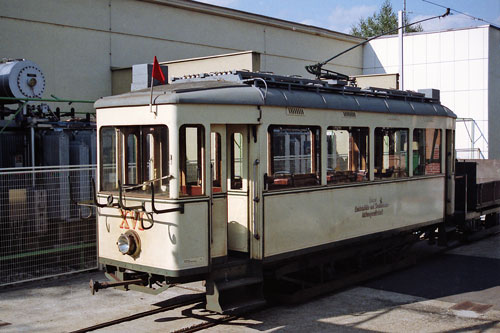
Pöstlingbergbahn tram No.XVIII
Photo: ©1989 Ian and Margaret Boyle
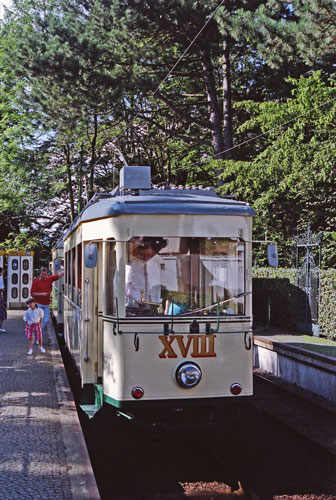
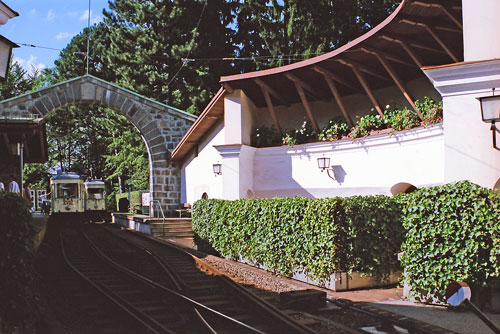
Pöstlingbergbahn Station
Photo: ©1989 Margaret Boyle
